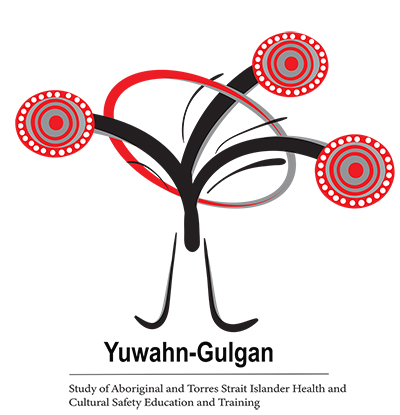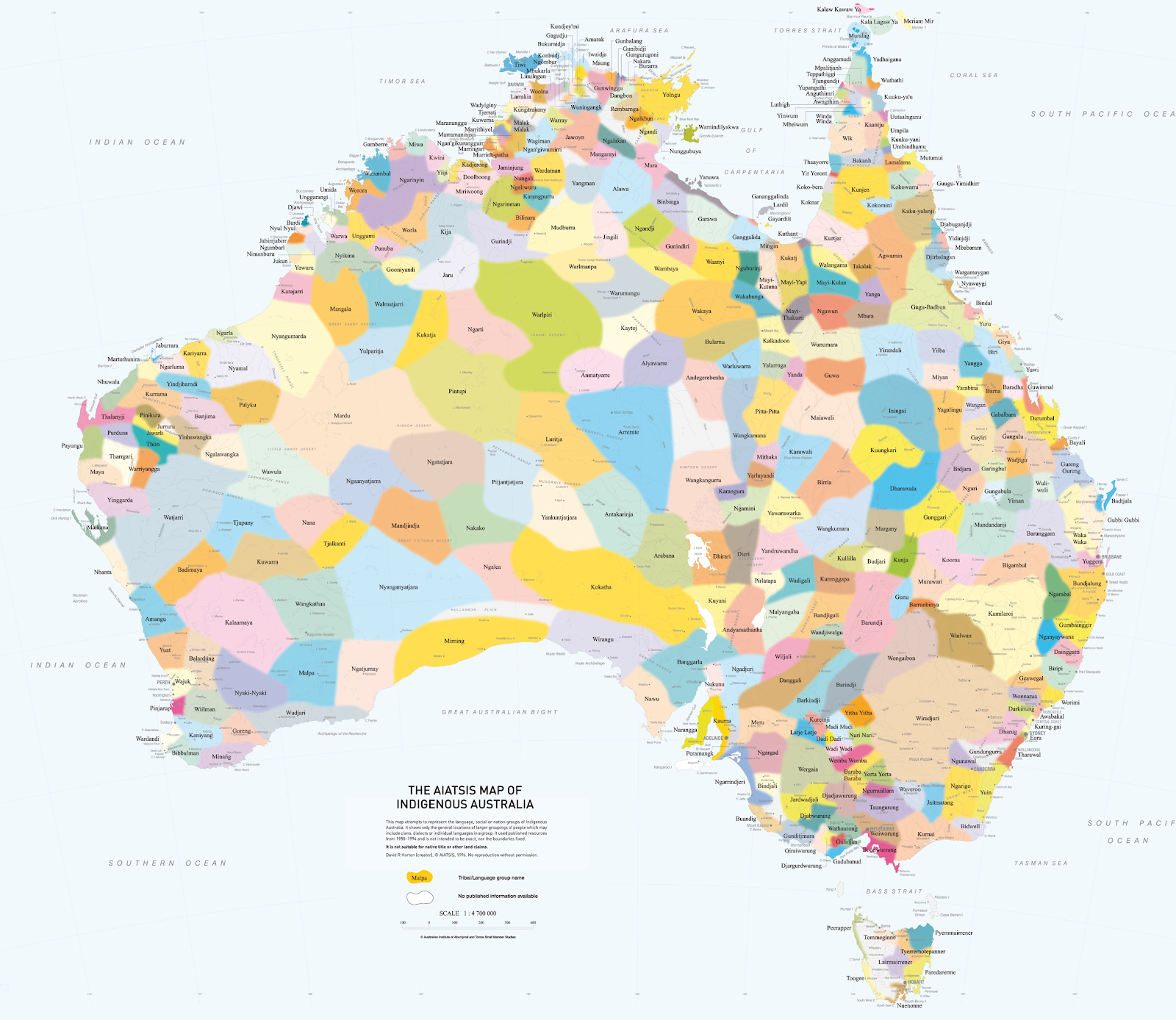CULTURAL RESPECT
Cultural Respect: Gain initial information regarding Aboriginal Peoples and Torres Strait Islander Peoples in the context of history, culture and diversity.
The Descriptors in Module 1:
- Descriptor 1: History of Australia's First Peoples and the post-colonial experience;
- Descriptor 2: First Peoples' cultures, beliefs, languages and practices;
- Descriptor 3: Diversity of First Peoples' culture;
- Descriptor 4: Humility and lifelong learning.

Ganngaleh nga Yagaleh Study (CLOSED)
Pre-learning Survey
Please be advised this study is now closed.
Thank you to all of the participants who contributed to this study.
Gifted from the Yugambeh language Peoples "Nyumbany Mibinyah nga Gulumanah Bugalmai nga Yuwahn-Gulgan Ganngaleh nga Yagaleh" translates to "Aboriginal and Torres Strait Islander Health and Cultural-Safety Education and Training". The short title for the Study is Yuwahn-Gulgan which means "cultural-safety".
The Yuwahn-Gulgan Study aims to evaluate the effectiveness of Aboriginal and Torres Strait Islander health and cultural safety education and training.
You can assist with the research by completing the pre-learning survey. The survey will take approximately 15-20 minutes to complete.
Ganngaleh nga Yagaleh Study pre-learning survey
Descriptor 1: History of Australia's First Peoples and the post-colonial experience
Introduction
The Graduate Cultural Capability Model identifies the capabilities that graduates develop after undertaking studies in a tertiary setting where the framework has been implemented. The model is based on the principles that:
- Aboriginal and Torres Strait Islander clients are at the centre of health delivery; and
- the ultimate goal is to enable better health outcomes for Aboriginal and Torres Strait Islander Peoples.
This topic introduces students to Australia’s true history. The implications of history for Australia’s First Peoples will be highlighted within the interactive timeline feature. The topics you will cover as part of the cultural respect capability include:
- History of Australia's First Peoples and the post-colonial experience
- First Peoples' culture, beliefs, languages and practices
- Diversity of First Peoples' culture
Learning Outcomes
Upon the completion of this topic you should:
a) be able to reflect on the impact of historical events and
b) be able to describe the implications that these events have on the contemporary health status of Australia’s First Peoples.
History and some implications for First Peoples health
Acknowledgement/acceptance of one of the oldest surviving populations that was able to adapt to the diverse and sometimes harsh challenges of the Australian continent’s environment for the last (estimated) 50,000 – 120,000 years (Dudgeon et al., 2014) is often disregarded when reflecting on the devastating impact of colonisation on Australia’s First Peoples.
The incredible ingenuity evident in the application of knowledge and through relationships to the land has not been effectively understood. Likewise, the extent of resilience, struggle for equity, equality and cultural recognition of First Peoples has been overlooked.
Australia’s history includes some policies that have been imposed on Australia's First Peoples that have effects that are ongoing and often unnoticed. e.g. Northern Territory Intervention. The influence that history has on the health and wellbeing of contemporary First Peoples can be explored further at the links below.
To gain a good understanding of the history visit the interactive timeline at Our Shared History and as you work through it consider how many of the events in the timeline you were aware of?
This timeline provides insight into some of the key events in our history and policies past and present that impact upon First Peoples. It is important to recognise that history always informs our current context. Understanding of these historical points helps develop understandings of contemporary perspectives amongst First Peoples, provides context for current challenges and rationale for the ongoing efforts for self–determination.
Use the links below for further reading and reference:
Descriptor 2: First Peoples' culture, beliefs, languages and practices
Introduction
This topic introduces students to First Peoples' cultures, beliefs, languages and practices.
Learning Outcome
Upon the completion of this topic you should be able:
a) to identify some of the components of First Peoples cultures, beliefs, languages, practices and
b) to discuss the influence these have on contemporary health and wellbeing of First Peoples.
Descriptor 2 – Identity and Health implications
Australia's First Peoples’ cultural values, social practices and respect for these aspects influences health practice. First Peoples view health as the culmination of physical, cultural and spiritual components that make up a worldview of wellbeing (NAHS, 1989) NATSIHP, 2016).
It is important to understand that Australia's First Peoples are comprised of two distinct cultural groups; the Aboriginal Peoples and the Torres Strait Islander Peoples. Aboriginal peoples have occupied mainland Australia, Tasmania and its islands. Aboriginal peoples are not one homogenous group with a single culture, but rather comprise over 300 different nations. Torres Strait Islander peoples occupied the islands between Australia and New Guinea. Due to colonisation, many Torres Strait Islanders now reside in mainland Australia.
Each has its own cultures, beliefs, languages and practices that are passed on through generations. All of these impact deeply and are connected to an individual’s health and wellbeing. Culture is central to First Peoples health (NATSIHP, 2016), as demonstrated in the video below. Cultures evolve as does knowledge. However, beliefs remain constant.
In 1970, an Aboriginal man, Harold Thomas designed a flag that has become widely accepted as representing Aboriginal identity. Whilst there is much diversity amongst First Peoples, the Aboriginal flag helps to unite us as a collective community representing our shared identity as First Peoples. In 1995 the Aboriginal Flag was recognised by the Australian Government as an official 'Flag of Australia' under the Flags Act 1953.
The flag consists of a coloured rectangle divided in half horizontally, the upper half black and lower red. A yellow circle sits at the centre of the rectangle.
The colours of the flag represent:
- The black represents the Aboriginal people of Australia;
- The red represents ochre colour of earth;
- The yellow represents Spiritual relation to the land and the sun, the giver of life and protector.
In 1992 the late Bernard Namok from Thursday Island designed the Torres Strait Island flag as part of a competition for a Cultural Revival Workshop. The flag consists of horizontal bands: two green and one blue, separated by black lines; a Dhari which is a distinctive traditional dance and ceremonial headdress; and a five-pointed star are central motifs of the flag. Each part of the flag gives meaning to the Torres Strait Island culture:
- The two green lines represent the mainlands of Australia and Papua New Guinea;
- The blue between these two continents is the blue of the Torres Strait Island waters;
- The black lines represent the people of the Torres Strait;
- The central symbol: is one that any islander anywhere can identify with, the Dhari or headdress;
- The five pointed star: represents the five major island groups of the Torres Strait as well as sea-faring navigation;
- The white represents peace.
The following link provides further information regarding Torres Strait Islander peoples and sea faring culture, in addition to further detail regarding the important symbolism apparent on the Torres Strait Island flag.

The following video (6min 30secs) provides insight into First Peoples connection to land and country and its importance to First Peoples. It offers insight into the importance of land and country to First Peoples.
First Peoples' culture, beliefs, languages and practices are discussed throughout. Be sure to refer to the library and community profiles tab where you can find more information.
As highlighted Australia’s First Peoples are a diverse people, with no single language, belief or protocols for all. This many Aboriginal and Torres Strait Island countries are best exemplified in the map provided in Descriptor 3.
Learning about the country you live and work on is a mark of respect to the First Peoples of that place. Efforts to understand the unique history of the country and community in which you live and work is a further important step in gaining understanding for some of the health challenges in that context and the ways in which those community members feel is best to attend to them.
Use the links below for further reading and reference: Identity is tied to the cultures that a person is raised in and how they identify with that culture.
Descriptor 3: Diversity and First Peoples Cultures
Introduction
This topic develops students’ knowledge and understanding of the diversity that exists among Australia’s First Peoples.
Learning Outcome
Upon the completion of this topic you should have an initial understanding of the diversity of First Peoples’ cultures and lived experiences.
Diversity and Cultures
Further to the discussions in descriptor 2, Aboriginal People are traditional owners of mainland Australia and a small number of Islands off the East coast of Australia. Torres Strait Islander Peoples are traditional owners of the group of islands in the Torres Strait (between the tip of Australia and Papua New Guinea). ‘Traditional owners’ are elders or senior members in the community who are responsible for their traditional land and waters.
More Information
To access further information and learn more about Aboriginal and Torres Strait Islander cultures please visit Share Our Pride.
More Resources
There are an estimated 778,100 people who live in Australia that identify as Aboriginal and/or Torres Strait Islander a total of 3.3% of the population (ABS, 2014, ABS, 2018). Those who identify as Aboriginal comprise 91% (708,071) of the population, only 5% (38,905) identify as Torres Strait Islander origin and 4% (31,124) identify as both Aboriginal and Torres Strait Islander origin.
The following links on community profiles are a valuable tool to access prior to placement, they provide an understanding on the community you will be visiting -
Descriptor 4: Humility and Lifelong Learning
Introduction
This descriptor introduces the concepts of cultural humility and lifelong learning to understand the importance of critical self-reflection for this continued learning.
Learning Outcome
Upon the completion of this topic you will be able:
a) to critically analyse one's own cultural values and privileges and
b) demostrate humility and respectful person-centered health care practices allowing you to understand one's own worldview for delivering culturally safe health care services to Australia’s First Peoples.
Cultural Humility involves listening without judgement and being open to learning from and about others. It involves learning about our own culture and our biases. It is a building block for cultural safety
Cultural Humility is a lifelong learning process that ensures learning about First Peoples cultures, developing respect, understanding and are sensitive to cultural differences.
Humility
What does cultural humility mean to you?
Please watch this short video of students talking about cultural humility.
Short self-reflection
Reflect for 5 minutes on your own cultural humility.
- Have had you heard this term before?
- Do you think you have demonstrated cultural humility before?
You are strongly encouraged to make notes of these thoughts and reflections particularly if you have examples for your own personal portfolio.
Now take the quiz for Cultural Respect...
References
Dudgeon P et al, (2014) Effective strategies to strengthen the mental health and wellbeing of Aboriginal and Torres Strait Islander people.
Houston, Shane. National Aboriginal Health Strategy Working Party [online]. Aboriginal and Islander Health Worker Journal, Vol. 13, No. 4, Dec 1989: 7- 8
Australian Government. (2013). National Aboriginal and Torres Strait Islander Health Plan 2013 - 2023. Canberra: Commonwealth of Australia.
History of Aboriginal Flag retrieved from https://aiatsis.gov.au/explore/articles/aboriginal-flag
History of Torres Strait Islander Flag retrieved from https://aiatsis.gov.au/explore/articles/torres-strait-islander-flag
Map of Indigenous Australia retrieved https://aiatsis.gov.au/explore/articles/aiatsis-map-indigenous-australia
Things you should know about January 26 retrieved https://www.sbs.com.au/nitv/article/2017/01/18/10-things-you-should-know-about-january-26
Australian Bureau of Statistics (ABS). (2016). Estimates of Aboriginal and Torres Strait Islander Australians, June 2011. Cat. No. 3238.0.55.001. Retrieved from http://www.abs.gov.au/ausstats/abs@.nsf/mf/3238.0.55.001
